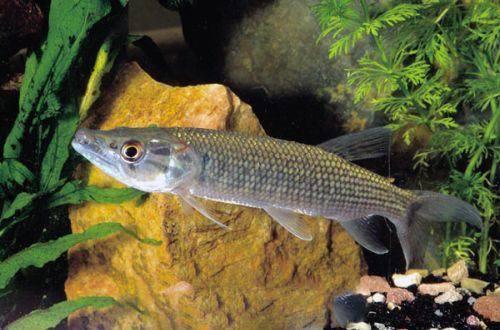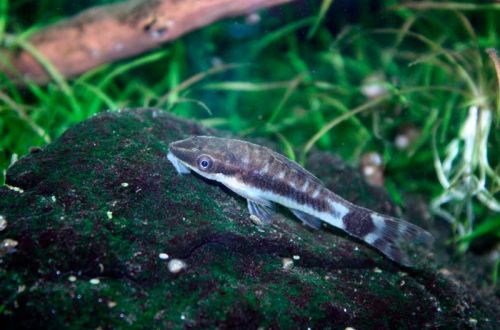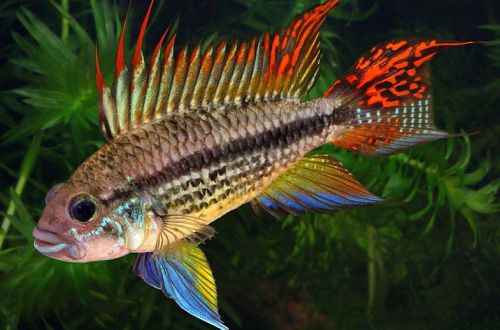
African pike
The African pike, scientific name Hepsetus odoe, belongs to the Hepsetidae family. This is a true predator, lying in wait for its prey, hiding in ambush, when some inattentive fish approaches a sufficient distance, an instant attack occurs and the poor victim finds himself in a mouth full of sharp teeth. You can watch such dramatic scenes every day if you are ready to spend a lot on arranging a huge aquarium. These fish are the preserve of professional commercial aquarists and are very rare among hobbyists.

Contents
Habitat
From the name it becomes clear that Africa is the birthplace of this species. The fish is widespread throughout the continent and is found in almost all water bodies (lagoons, rivers, lakes and swamps). Prefers a slow current, keeps in coastal areas with dense vegetation and numerous shelters.
Brief information:
- The volume of the aquarium – from 500 liters.
- Temperature – 25-28°C
- Value pH — 6.0–7.5
- Water hardness – soft to medium hard (8-18 dGH)
- Substrate type – any
- Lighting – moderate
- Brackish water – no
- Water movement is weak
- Fish size – up to 70 cm (usually up to 50 cm in an aquarium)
- Meals – live fish, fresh or frozen meat products
- Temperament – predator, incompatible with other smaller fish
- Content both individually and in a group
Description
Outwardly, it is very similar to the Central European pike and differs only in a larger and taller body and a not so elongated mouth. Adult individuals reach an impressive size – 70 cm in length. However, in a home aquarium, they grow much less.
Food
A true predator, hunting its prey from an ambush. Given that most African pikes are supplied to aquariums from the wild, live fish should be included in the diet. Viviparous fish, such as Guppies, are often used as food, which breed often and in large numbers. Over time, pike can be trained to eat meat products such as shrimp, earthworms, mussels, fresh or frozen fish pieces.
Maintenance and care, arrangement of aquariums
Although the pike does not grow to its maximum size in an aquarium, the minimum volume of the tank should nevertheless start at 500 liters for one fish. In the design, pieces of snags, smooth stones and large plants are used. From all this they form a kind of section of the coast with various shelters, the rest of the space remains free. Provide a tight lid or coverslip to prevent accidental jumping out while hunting.
If you are planning such an aquarium, then specialists will most likely deal with its connection and placement of equipment, so in this article there is no need to describe the features of filtration systems, etc.
Optimal conditions are characterized by a weak current, a moderate level of illumination, a water temperature in the range of 25–28 ° C, a slightly acidic pH value with low or medium hardness.
Behavior and Compatibility
Not suitable for a community aquarium, kept alone or in a small group. It is allowed to combine with large catfish or multifeathers of a similar size. Any small fish will be considered food.
Breeding / reproduction
Not bred in home aquariums. African pike juveniles are imported from the wild or from specialized hatcheries. In natural reservoirs, individuals with a length of 15 cm or more become sexually mature. During the mating season, the male equips a nest in the thickets of plants, which he fiercely guards. The female glues the eggs to the base of the nest with the help of special glands.
After the appearance of the fry, the parents leave their offspring. Juveniles continue to stay in the nest for the first few days, and then leave it. The sticky substance left after spawning continues to be used by fry to attach to plants, thereby hiding from predators and saving strength.





